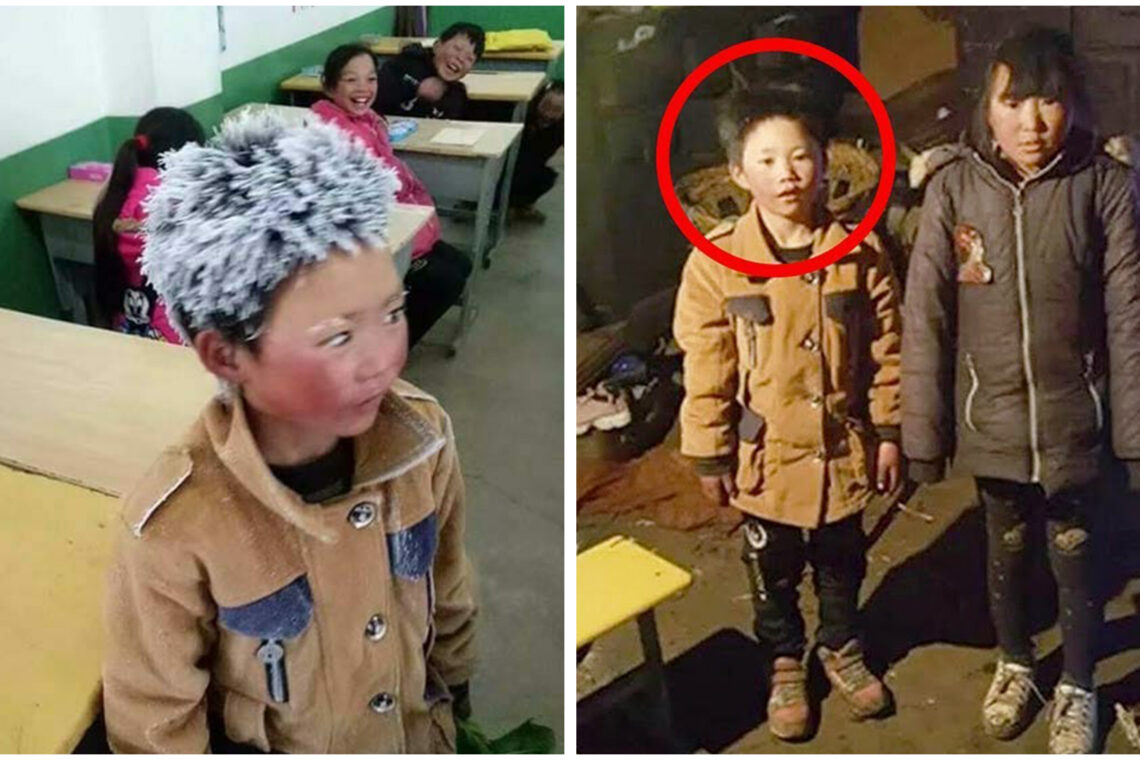
Education is a fundamental right for every child, serving as a vital foundation for their personal growth and future opportunities. Schools provide an essential environment for learning, equipping students with the knowledge and skills they need to navigate life. However, the reality is that countless children around the globe face significant barriers to accessing education. Some are unable to attend school due to various factors, while others endure extremely difficult conditions just to pursue their studies.
One poignant example is the story of an eight-year-old boy named Wang Fuman, who lives in the mountainous region of Xinjie province, China. His journey to education has captured the attention of many and sparked conversations about the challenges faced by children in similar situations. Wang’s life changed when his mother left the family, and his father had to relocate to a larger city for work. This left Wang in the care of his grandmother, who provides support as best as she can.
Wang’s school is located approximately three miles from his home, which translates into a grueling daily trek. Each morning, he embarks on this long journey, often in harsh weather conditions. With winter setting in, the challenges have intensified significantly. The temperatures in his area can plummet to as low as -9 degrees Celsius, making the walk to school not only physically demanding but also perilous.
Recently, images depicting Wang’s struggle have gone viral, drawing widespread attention to his plight. The principal of his school recognized the need to highlight the extreme conditions faced by many students and decided to share Wang’s story through photographs. One particular image stands out, capturing the harsh reality of his situation: Wang’s hair is encased in frost, and his cheeks bear the harsh bite of the cold. It is a stark reminder of the sacrifices some children make for the sake of education.
Determined not to miss an important test, Wang chose to brave the freezing temperatures and make the trek to school. His resolve to continue his education, even in the face of such adversity, is truly inspiring. While other children might be discouraged by the cold, Wang remained focused on his studies, demonstrating remarkable discipline and dedication. During the test, he was so cold that his hands struggled to function, yet he persevered.
Wang’s story resonates with many, serving as a call to action for those who can help improve the conditions that prevent children from obtaining a proper education. It shines a light on the need for greater awareness and support for children in similar circumstances. Education should not come at the expense of a child’s health or well-being; instead, it should be a nurturing experience that fosters growth and development.
The emotional impact of Wang’s situation cannot be understated. It evokes a sense of empathy and a desire to contribute positively to the lives of those who face educational barriers. For many, Wang’s journey serves as a powerful reminder of the resilience of children who strive to learn despite overwhelming challenges. His commitment to his studies reflects a broader issue faced by countless children worldwide, underscoring the importance of advocacy for educational equity.
While the image of Wang walking through the snow has sparked outrage and concern, it also represents hope. Many individuals and organizations are inspired to take action, seeking ways to provide assistance and improve conditions for children in similar situations. Support could take various forms, such as providing better transportation options, creating safe learning environments, or even improving infrastructure to make access to education easier and more feasible.
It is essential for communities and governments to recognize the barriers to education that exist and to work collaboratively to address them. No child should have to endure freezing temperatures or treacherous journeys to attend school. By prioritizing education and ensuring that all children have the opportunity to learn in safe and supportive environments, we can help build a brighter future for generations to come.
In summary, Wang Fuman’s story is not just about a boy facing the cold; it is a reflection of a larger issue impacting many children worldwide. Education is a fundamental right that should be accessible to all, regardless of their circumstances. By sharing stories like Wang’s, we can foster awareness and inspire action to create a world where every child has the opportunity to learn, grow, and thrive without the burdens of hardship. The hope is that through collective effort, we can ensure that education is a pathway to a better life for every child, free from the challenges that currently hinder their potential.